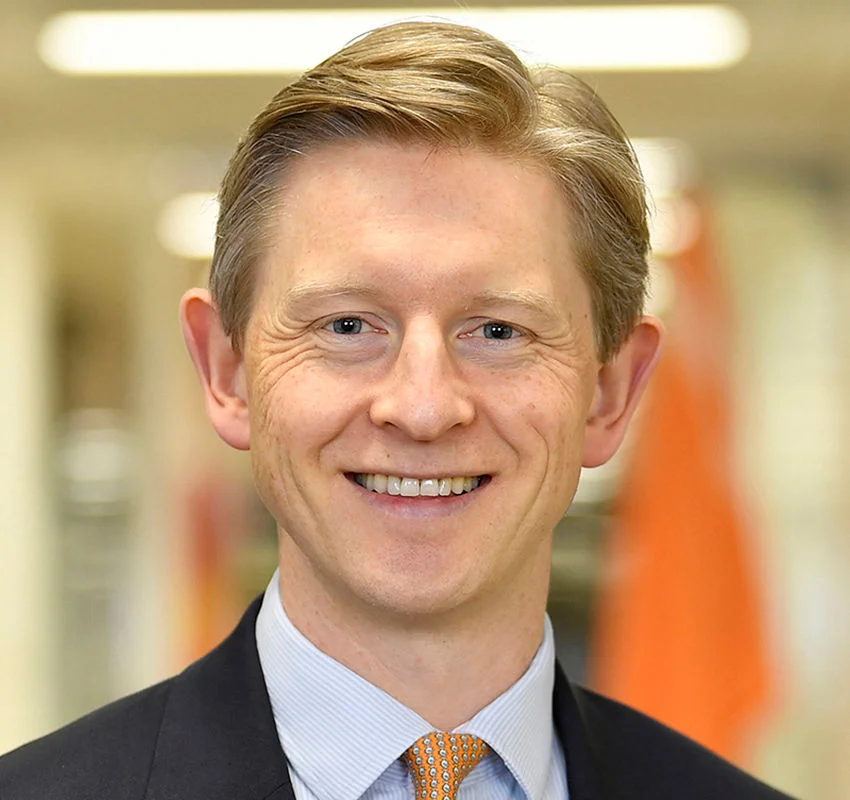Increasingly naked aggression at work
State sponsored assassination; sub-sea internet cables disrupted and gas pipes destroyed; widespread cyber-attacks on government, industrial and commercial targets; electoral interference; behind-the-scenes organisation and funding of illegal migration streams to destabilise western democracies; drones deliberately directed into Poland and operational over Denmark; fighter jets breaching Estonian air space. Whether you want to call it World War Three or not is semantics: these are just some of the incidents and events in a mounting dossier of evidence of the extensive, low-intensity, hybrid and asymmetric warfare being actively and deliberately waged by Russia against the West, Europe in particular.
The impotence and irrelevance of the UN to contain it
This week saw President Trump harangue the United Nations for the functional uselessness and irrelevance of the institution and the collective shortcomings and inadequacies of its members. Contrast with 2017 and his previous address when he was laughed at and jeered, this time despite exceeding his allotted 15 minute slot by five-fold in a rambling but sugar-free and sometimes factually-elastic assault on friend and foe alike, they listened politely and clapped respectfully at the end. However much they might disagree with him, and in many cases detest him, for most there will have been a grudging admiration of his ability to say the unsayable mixed with a wistful “if only we had that power too”.
The UN is holed below the waterline. The irony cannot be lost on anybody that, of the five permanent members of the UN Security Council, those directly responsible for upholding international law and the principle of self-determination, Russia has illegally invaded and occupied a sovereign nation and yet remains a fully-accredited, voting (and vetoing) member of the Council; China is in active cooperation with Russia and has its own explicit agenda of world dominance through a well-rehearsed programme of strategic neo-colonialism and geo-political control; the President of the United States has indicated his own intention for America to be the most “dominant civilisation the world has ever seen”, including the annexation by unclear means of Greenland, Canada and the Panama Canal; for all its international posturing, France is almost broken and ungovernable; and the United Kingdom is anything but united and, despite a government with a significant working majority, appears in a state of political paralysis. So much for unity, stability, security, responsibility and accountability. As for the remaining members, largely impotent and unable to bring influence to bear, Israel is an open goal against which to score and upon which to vent their frustration.
Putin probes the weak spots
Trump has thrown the burden of security in Europe on to Europe’s NATO members and Canada. The onus is now also firmly on them to do all the heavy-lifting supporting Ukraine both militarily and financially. Missing the military heft of America (unless they buy replacement kit from the US), however much they are verbally supportive of President Zelensky, Europe’s efforts remain qualified and insufficient to allow Ukraine to win.
In labelling Europe as “failing” (for which the obvious sequitur is “you need to get a grip”), in his own peculiar way of urging Europe on, Trump’s blunt but corrosive public assessment of Europe’s political, economic, competitive and defence shortcomings only feeds Putin’s interpretation that the achievement of a politically and militarily sterile buffer-zone between the EU/NATO and Russia in eastern Europe is achievable. By the hybrid means above, in an accelerating programme of overt incursion and interference, Putin is literally testing the boundaries both geographically and in terms of measuring the reaction. He is pressing the buttons to see how many and of what kind generate a response and from whom.
Jaw-jaw not war-war
With their own domestic audiences in mind, Keir Starmer and Emmanuel Macron are the self-appointed but competing leaders of the “Coalition of the Willing” for the security of Ukraine. In the absence of a peace plan as Putin plays Trump but refuses to play ball with him, and with little certainty of explicit US security guarantees, six months of deliberation have proved fruitless. The severe limitations of potential post-conflict security arrangements, due to a chronic lack of military and financial resources, are painfully obvious. Trump urges Europe to stop buying embargoed Russian oil and gas, and yet if he too were serious about bringing the conflict to an end, he would be imposing full sanctions on both Russia and its supporters including China and India, rather than mere trade tariffs on Chinese and Indian goods imported into the US. The will completely to isolate Russia economically is not there.
As for broader western European defence, what might be termed an increasing Balkanisation of attitudes is evident: the closer to the Eastern Front, the more hawkish the stance. But with the exceptions of Poland and Finland, the remainder of the Frontier countries rely heavily on other NATO members to provide the fire-power to match the rhetoric. It is instructive that while operating ground-based air defence systems, not one of Estonia, Latvia and Lithuania possesses a single fighter jet of their own between them. The recent provocations over Poland and Estonia prompted both governments to invoke “Article 4” of the NATO Treaty, essentially discussions about what to do when a member feels threatened (Article 4 has been invoked nine times in NATO’s eight-decade history, all since 2003 and on four occasions by Turkey; one called in March 2014 by Poland about Russia’s belligerence towards Ukraine in Crimea produced no response beyond the usual diplomatic expulsions, while the one called by several European countries on 24 February 2022, two days after the invasion of Ukraine, saw the stable door being bolted after the Russian horse was already loose). As we have said on many occasions, NATO’s ex-US military capability is generally high in quality but has significant gaps and is low in resilience and depth; its biggest weakness, however, aside from the paucity of resources, is political will. When push comes to shove, the acid test is what will NATO’s European governments actually do in response and can they carry their electorates with them? It will be political leadership and its solidity across the Alliance which will determine the outcome.
UK defence: like Old Mother Hubbard
The UK is NATO’s European bastion on the north-west flank covering the north Atlantic. The Russians will know that today, much of the Royal Navy’s effectiveness is moored alongside. The seemingly well-informed “Navy Lookout” website informs us that with the SSN (Ship Submersible Nuclear: nuclear powered but conventionally armed submarine) HMS Anson having returned to Faslane two months ago, the Royal Navy currently has (or had) no conventional attack submarines at sea anywhere, not even shadowing the carrier HMS Prince of Wales in the Far East. Out of the five Astute Class SSNs, only one, Anson, is seaworthy; two of these boats have not been to sea in over three years. Of the surface air defence destroyer and anti-submarine frigate forces, what should be an absolute minimum of 19 ships is about to drop to 13 with the Type 23 frigate Lancaster being paid off for scrapping; at least three of what remain are currently non-operational for refits and maintenance. In the skies, despite the obvious aerial provocations and risks and the RAF being fully committed over eastern Europe, the eastern Mediterranean, the Gulf and the Falklands, the MoD is persisting with the programme to retire the older Typhoons, the ones delivered in the first tranche, with no like-for-like replacements planned.
Beginning to think like a Ukrainian!
More encouragingly, the Defence Secretary has announced a major drone production initiative in conjunction with Ukraine (perhaps he read the 25 July Merlin Macro about procurement entitled “Think Like a Ukrainian!”). As spelled out in the 2025 Strategic Defence Review, unmanned weapon systems are the clear direction of travel. Deterrence is NATO’s first line of defence. But if it fails and an enemy launches a successful attack, what NATO and its governments have to ask themselves is this: assuming we manage to stall and hold the Russians somewhere in central Europe, what next? Is the idea to push them back across the frontier, much as happened on a much smaller scale in Gulf War 1 when Saddam’s Iraqi forces were ejected from Kuwait but no further action was taken, the threat was left hanging? Or does NATO finish the job and push for unconditional surrender by pressing into the Russian heartland and occupying Moscow, as the Russians themselves did in 1945 in Berlin?
As both the Russians and the Ukrainians are finding in the fourth year of all-out conflict, the over-reliance on drones has severe limitations and is reductive in every sense. What both sides are experiencing is the 21st century equivalent of the Western Front of WW1: almost static warfare despite the enormous weight of ordnance and explosive expended reducing square miles of urban real estate to so much rubble. It will be fire and manoeuvre that eventually breaks the deadlock (or tactical nuclear in the extreme, but let’s not go there), which requires weight of troops, armour and aircraft. Certainly in the case of the UK conflict strategy, these are resources that are currently sliding down the page in the MoD playbook.
Backs to the wall
Rachel Reeves is struggling to balance her books, not least that over the 10 years to 2035 she must increase defence spending by 1.2 percentage points of GDP to 3.5%. The fiscal alternatives are all painful, many escape routes blocked off or unacceptable. The MoD’s financial burden is inexorably rising some of which contributes nothing to national security: the Afghan data breach resettlement costs may in the long-run add up to billions of pounds; in a case of pick-a-number-any-number between £3.5 billion and £47 billion (albeit spread over 99 years), the newly volunteered financing cost of leasing our own former sovereign island of Diego Garcia in the Indian Ocean is to be shared with the Foreign Office. As co-head of the Growth Defence Committee, she knows that there is an increasing urgency to provide solutions against future aerial attacks (an Iron Dome equivalent) and the cyber assault which is already being waged against us. If the defence sums are daunting, the price in every sense of not meeting them will be much more frightening: leaving aside the human cost, in comparable circumstances in 1944 at its peak the UK was spending half its GDP on the war effort. Still, looking at it pragmatically, the 900,000 18-24 year-old UK NEETs (not in employment, education or training) will be conscripted, given a rifle and packed off to the Eastern Front; at least that will go some way towards cutting the welfare bill; and they will be active even if not in conventional economic terms and not in the way they imagined.
If you want to understand a rising and steepening UK yield curve of government borrowing costs reflecting financial and economic stress and geopolitical tension, that last paragraph more-or-less explains it.
The Jupiter Merlin Portfolios are long-term investments; they are certainly not immune from market volatility, but they are expected to be less volatile over time, commensurate with the risk tolerance of each. With liquidity uppermost in our mind, we seek to invest in funds run by experienced managers with a blend of styles but who share our core philosophy of trying to capture good performance in buoyant markets while minimising as far as possible the risk of losses in more challenging conditions.
Confronting hard truths about work
Chancellor Reeves claims to want to engineer growth. But to make sound progress it must be productive growth; that is the only way of increasing long-term resilience, competitiveness and prosperity. A greater proportion of the working age population must be economically active than is the case today (just in the year that Labour has been in office, relaxations to welfare qualification criteria, particularly associated with mental health, have added over a million adults to the existing list of those signed off as sick and unavailable for work: inactive but needing paying for). Additionally, those in employment need to achieve a greater output for the number of hours worked. Simply adding to the public sector employment register and recycling taxpayers’ money is not the answer.
Rising prosperity leads to greater disposable income and the freedom to choose whether to spend, save or invest for the future. Declining prosperity has the opposite effect. But underlying this is a mindset that from an economic standpoint, based on the most recent election results and the economic policies which were presented by the left-of-centre parties in their manifestos (Labour, LibDems, Greens, SNP, Plaid, the Alliance parties and Sinn Fein in N Ireland), the majority of voters either do not share, do not understand or are not prepared to accept.
Uncle Sam knows better
America has many faults. But what it cannot be faulted for is lacking any national spirit of entrepreneurship, risk-taking, business and busy-ness and the desire to “get on”. It champions aspiration; it celebrates wealth and wealth creation; it rewards hard work and has an intolerance of indolence; it is light on regulation. Look at those G7 comparisons above. The result is obvious: at $66.6k per head of GDP the US is not only by a long way (40%) more productive than its nearest rival (the UK), but with a GDP/capita growth rate of over 9% over five years being a third greater than the next (Italy, coming from the lowest base but transforming itself), it is accelerating away, showing the rest of us a clean set of heels. That is especially against the UK, Germany and Canada which in GDP/capita terms are going backwards not only in relative but absolute terms.
It is a truism that from an economic perspective, the invisible centre-line that philosophically divides the right and left in America is well to the right of where it is in Europe. Forty years ago under Margaret Thatcher and Ronald Reagan, the UK and the US were aligned; while the US has remained largely conservative (with a small ‘c’), the UK has drifted markedly leftwards, more in line with Europe.
Cross-roads: left for penury, right for prosperity
As Rachel Reeves prepares her budget, the wind is in her face politically, economically and fiscally. She deserves no sympathy. But to those advising her, particularly the new appointees who share the radical ideology of taxing assets, stop and ask yourselves: in doggedly pursuing the chimera of fairness and equality, is an outright assault on wealth and capital ultimately in the national interest?
Theirs is an ideology that is perfectly rational in a closed society and a command economy; it does not and cannot work in an open, competitive marketplace where others will simply take advantage of your weakness. You can’t tax your way to prosperity but you can tax your way to penury.
As for the electorate, we have a lot of thinking to do too. Does the state work for us or do we work for the state? Fewer of us appear capable of work or even want to work at all. Go figure.
The Jupiter Merlin Portfolios are long-term investments; they are certainly not immune from market volatility, but they are expected to be less volatile over time, commensurate with the risk tolerance of each. With liquidity uppermost in our mind, we seek to invest in funds run by experienced managers with a blend of styles but who share our core philosophy of trying to capture good performance in buoyant markets while minimising as far as possible the risk of losses in more challenging conditions.
The value of active minds: independent thinking
A key feature of Jupiter’s investment approach is that we eschew the adoption of a house view, instead preferring to allow our specialist fund managers to formulate their own opinions on their asset class. As a result, it should be noted that any views expressed – including on matters relating to environmental, social and governance considerations – are those of the author(s), and may differ from views held by other Jupiter investment professionals.
Fund specific risks
The NURS Key Investor Information Document, Supplementary Information Document and Scheme Particulars are available from Jupiter on request. The Jupiter Merlin Conservative Portfolio can invest more than 35% of its value in securities issued or guaranteed by an EEA state. The Jupiter Merlin Income, Jupiter Merlin Balanced and Jupiter Merlin Conservative Portfolios’ expenses are charged to capital, which can reduce the potential for capital growth.
Important information
This document is for informational purposes only and is not investment advice. We recommend you discuss any investment decisions with a financial adviser, particularly if you are unsure whether an investment is suitable. Jupiter is unable to provide investment advice. Past performance is no guide to the future. Market and exchange rate movements can cause the value of an investment to fall as well as rise, and you may get back less than originally invested. The views expressed are those of the authors at the time of writing are not necessarily those of Jupiter as a whole and may be subject to change. This is particularly true during periods of rapidly changing market circumstances. For definitions please see the glossary at jupiteram.com. Every effort is made to ensure the accuracy of any information provided but no assurances or warranties are given. Company examples are for illustrative purposes only and not a recommendation to buy or sell. Jupiter Unit Trust Managers Limited (JUTM) and Jupiter Asset Management Limited (JAM), registered address: The Zig Zag Building, 70 Victoria Street, London, SW1E 6SQ are authorised and regulated by the Financial Conduct Authority. No part of this document may be reproduced in any manner without the prior permission of JUTM or JAM.









